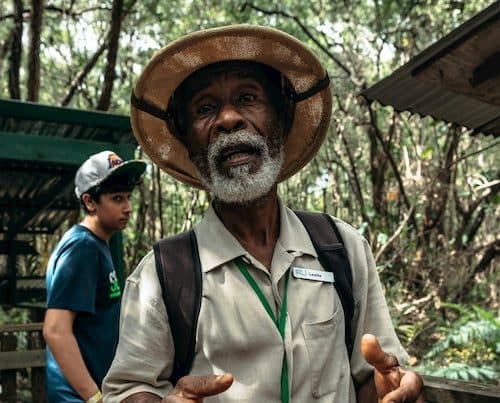Adventure Tourism: An Operators Guide To Risk Transfer
The business of providing adventure activities to tourists is a contentious issue when it comes to securing risk transfer via short term insurance. The reasons are as complex as this niche tourism sector is diverse.
This article explores how the adventure tourism sector in South Africa is defined, what the sectors risk transfer needs are, how underwriters perceive such risks, and how adventure operators can manage risks to obtain favourable insurance premiums. By Des Langkilde.
What is Adventure Tourism?
The Adventure Travel Trade Association (ATTA) defines adventure tourism as; a trip that includes at least two of the following three elements: physical activity, natural environment, and cultural immersion.
ATTA further divides adventure tourism activities into 33 types, namely:
- archaeological expeditions,
- attending local festivals/fairs,
- backpacking,
- birdwatching,
- camping,
- caving,
- climbing,
- cruise,
- cultural activities,
- eco-tourism,
- educational programs,
- environmentally sustainable activities,
- fishing/fly-fishing,
- cultural tourism,
- hiking,
- horseback riding,
- hunting,
- kayaking – sea/whitewater,
- learning a new language,
- orienteering,
- rafting,
- research expeditions,
- safaris,
- sailing,
- scuba diving,
- snorkelling,
- skiing – snow/sandboarding,
- surfing,
- trekking,
- walking tours,
- visiting friends and family,
- visiting historical sites, and
- volunteer tourism.
The UNWTO defines risk broadly as; a situation that exposes someone or something to danger, harm, or loss. Risk can be a physical safety matter, a risk of property loss, a financial business risk, and more. In varying degrees, risk in terms of physical safety and property security is present in most adventure tourism experiences, because adventure travellers tend to gravitate both toward activities that carry some inherent risk level and destinations that may not be as developed from an infrastructure or training perspective.
From an insurance underwriters perspective, defining adventure tourism is far more complex as the definition varies according to the specific activity provided or undertaken. It is this diversity in defining adventure tourism that makes the sector so difficult to insure under an all-encompassing insurance policy as every activity has its own particular associated risks and hence safety and risk management requirements and procedures.
Many risk management models in tourism deal exclusively with the safety and physical risks of adventure tour activities. For example, in Brazil, sector operators assess risk on a formulaic scale of probability multiplied by consequences:
Adventure Tourism Risk Analysis: (RA) = Probability x Consequences
Probability runs on a scale of 1 (rare) to 5 (certain), while consequences run on a scale of 1 (no harm) to 5 (catastrophic). The minimum Risk Analysis possible – 1 (rare) x 1 (no harm) = 1 – would be a risk that is highly unlikely to happen, and if it did occur, would not result in harmful consequences. Therefore, this outcome is a very acceptable operational risk.
The maximum Risk Analysis – 5 (certain) x 5 (catastrophic) = 25 – is a risk that is sure to happen, and if it occurred, would be catastrophically harmful.
Adventure Tourism Insurance Needs
The most important risk that operators need to transfer by means of insurance is liability, which can be defined as; the state of being legally obliged and responsible. In a legal sense, all operators have a ‘duty of responsible care’ to their clients, which implies that they must take every possible precaution to ensure the safety and well being of those for whom they are caring.
According to Wayne Forrester of Savage Jooste & Adams Attorneys, the concept of a legal duty is a device that courts in South Africa use in determining whether or not it is reasonable to impose liability. A tour operator, therefore, has a duty to conform to reasonable standards of care. The test of ascertaining the existence of a duty of care in any particular case is the ‘foresight of a reasonable person’. This means that one owes a duty of care to persons to whom harm may be reasonably foreseeable.
In this regard the following questions must be asked:
- Would a reasonable person in the position of the defendant have foreseen the possibility of his or her conduct injuring another? and;
- Would a reasonable person have taken steps to minimize against this danger?
- If so, did the defendant take the steps in question? If not, the defendant would probably be considered negligent.
In the tourism industry, most claims that give rise to liability are personal injury claims. It is also possible for liability to arise under circumstances where no first aid is available or no proper evacuation plan is in existence.
The most common insurance product used for the transfer of liability risks in tourism is General Public Liability. Most of these policies are underwritten for risks associated with accommodation, food and beverage service providers. The policy wording generally accommodates incidents where the policyholder is negligent, which may arise from ‘slip and fall’ incidents, such as slippery floor tiles or faulty building construction, such as loose balustrades or ‘food and drink poisoning’. The majority of these policies specifically exclude incidents resulting from fee-based excursions, such as transportation, events and ‘potentially hazardous’ adventure activities.
Considering Adventure Tourism Risk
Contrary to popular belief, liability insurance underwriters are not risk-averse – it’s just that some insurers have more of an appetite for certain kinds of risk than others. Rates are however determined on the underwriters’ perception of the risk, influenced both by their own claims experience and the information supplied by the broker, who in turn is influenced by a combination of their own experience and by the insurance proposal form submitted by the client.
Bearing this in mind, it stands to reason that the more concise and in-depth the information submitted by the client, the more the broker can use this information to influence the insurers’ premium rating decision.
Bear in mind that most liability insurance coverage is governed by re-insurance treaties, that is to say, that the treaty defines the parameters under which the insurer will accept the risk being transferred from the insured. Any liability risk that lies outside of, or goes beyond the treaty will, therefore, have to be assessed on an individual basis and rated accordingly.
It is in this process that adventure tourism operators can influence the terms favourably.
Adventure Tourism Risk Management
Being able to present a concise risk management plan of your adventure tourism business activity, or a combination of activities would be the first step.
Certainly, any adventure tourism operator who is able to present risk analysis documentation when applying for liability insurance would be rated as a responsible entrepreneur and be afforded more favourable insurance premiums as a result.
Group insurance schemes for Adventure Tourism
Group insurance schemes are based on the principle that all members of the group share a common risk exposure profile and subscribe to set operational standards. The insurance concept; ‘the premiums of many pays for the claims of the few’ applies here, and results in often vastly reduced premium contributions being levied on the members of the group.
In these schemes, the group is normally a registered trade association that becomes the insured under the policy, which then covers its members. To obtain optimum premium rates all members would be obliged to participate in the group insurance scheme and the association would collect the pro rata premium contributions from its members and pay the insurer in a lump sum on the inception of the policy.
Providing such a scheme to an Adventure Tourism Association does become problematic, however.
The first consideration is the diversity of activities and experiences that fall within the adventure tourism sector. From a public liability insurance point of view, the underwriting criteria adopted in rating risk in terms of frequency of occurrence, and severity of incidence, will vary dramatically from one activity to another.
Ascertaining such risks against hugely diverse activities becomes even more difficult when faced with the lack of quantifiable accident or incident reports against which underwriters are able to assess the risk. Regulatory compliance issues also impact on the provision of insurance cover, as policy wording requires that the insured abide by the laws and regulations that govern the industry in which the insured operates.
It is quite possible that the public liability insurance policies that many adventure tourism operators currently have in place may well be totally inappropriate to their specific activities, and the policy may not respond in the event of a claim.
Conclusion
Adventure tourism businesses in South Africa should be encouraged by the efforts of the National Department of Tourism in partnership with the South African Tourism Services Association (SATSA), who has been tasked by the Minister of Tourism to create a home for self-regulation of the adventure tourism sector. Once this process is finalised, insurers will be able to structure a group insurance scheme to underwrite the liability risks of SATSA members in this category at far more favourable premium rates than those that are currently available.







